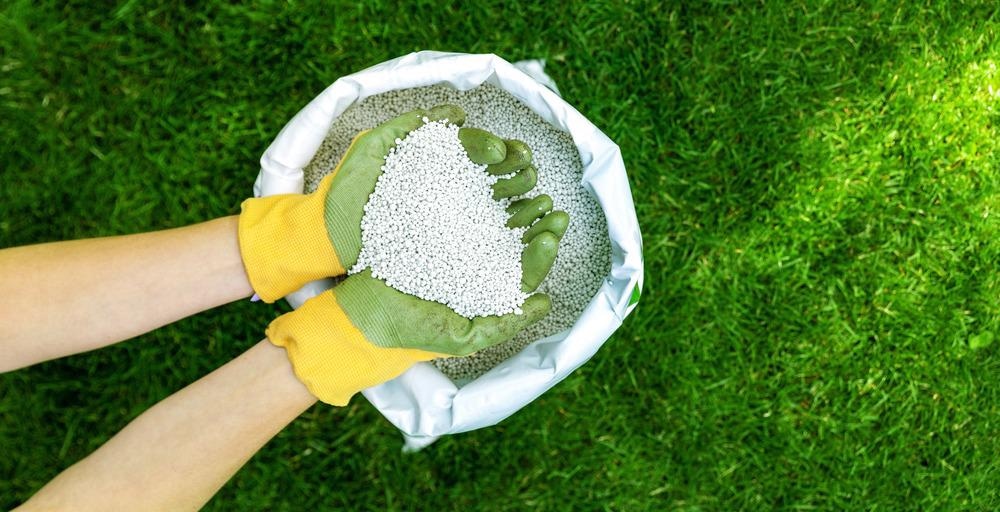
Image Credit: ronstik/Shutterstock.com
Award-winning cleantech company, CCm Technologies, has developed an innovative method of producing sustainable fertilizers from captured carbon dioxide. The technology is set to significantly reduce the volume of carbon dioxide released into the atmosphere from industrial power generators, while at the same time limiting the negative impact of unsustainable fertilizers. The company’s first full-scale fertilizer manufacturing plant has been created and is ready for deployment to Viridor’s multi-waste site located in Somerset, England.
The Need to Reduce Carbon Emissions from Industrial Power Generators
Greenhouse gas emissions are warming our planet and causing a multitude of negative consequences that are harming our planet, human and animal health, and our chance of a prosperous future.
For decades, scientists have warned against the various human activities that are significantly adding to the levels of atmospheric carbon dioxide. Now, we have reached a crucial point where action must be taken or the damage we are doing to our planet will be irreversible. To tackle this significant issue, scientists worldwide are developing strategies that provide long-term solutions to helping industries achieve carbon neutrality.
Industrial power generators are a major contributor to atmospheric carbon dioxide levels. According to 2019 data, electricity production accounts for a quarter of all greenhouse gas emissions in the US. The sector is second only to transportation in terms of its emissions. Industry takes third place, with 23% of all greenhouse gas emissions being attributed to this sector, mainly from burning fossil fuels to power their activities. These figures demonstrate the urgent need to address the significant volumes of carbon dioxide being released from industrial power generators.
The Value of Sustainable Fertilizers
Fertilizers that are used by agriculture and in gardens are leading to numerous environmental issues. The overuse of phosphate‐based fertilizers is reducing the amount of available phosphorous in the soil, which has a knock-on detrimental effect on the environment as plants are heavily dependent on this element for nutrition. In addition, the phosphorous and nitrate in fertilizers is entering the world’s water systems and inducing the excessive growth of algae, reducing the level of oxygen available in these water sources for aquatic life. excessive fertilizer use is also responsible for adding greenhouse gases into the atmosphere, mainly nitrous oxide.
Therefore, there is a huge demand for sustainable fertilizers to further address emissions and protect the environment from the negative impact of excessive phosphate‐based fertilizer use.
RE:TV - Reusing Captured Waste (CCm Technologies) - September 2020
Video Credit: CCm Technologies/YouTube.com
The Benefits CCm’s Technology
CCm Technologies was established to optimize “resource use through Carbon Utilization (CCU) and carbon capture solutions, including the production of net zero carbon fertilizers”. It has created a solution that addresses the issue of carbon dioxide produced by industrial power generators and the need for sustainable fertilizers.
Using captured carbon dioxide from industrial power generators, CCm Technologies stabilizes materials from agricultural and industrial waste streams (such as ammonia and phosphates). System highlights include the production of 1.98 GJ (551kWh) of thermal energy per ton of carbon dioxide captured. This thermal energy is then used to fuel the pasteurization step.
The system will reduce Viridor's carbon footprint by 90% in comparison with manufacturing techniques of traditional fertilizer. This demonstrates the value of the method within the industry, presenting an opportunity for numerous companies to meet government-implemented carbon emission targets to help industries meet carbon neutrality deadlines.
CCm’s system has also been developed for use in the sewage sector, where it will be used to capture phosphorous and ammonia waste, which is currently polluting the water supply, and convert it into sustainable fertilizer.
Overall, CCm’s technology offers three main advantages. Firstly, it utilizes waste streams and promotes a circular economy. The technology generates high-value and high-performance materials by recycling existing low and negative value sources.
Second, the technology will be a significant solution to helping both the agricultural and industrial sectors to reduce their carbon emissions and help the UK (so far the only location of CCm’s technology) reach its objective of net-zero carbon by 2050. These savings in carbon dioxide release will come from the direct capture and use of carbon dioxide, the replacement of high-intensity inputs with recycled ones, and the retention of carbon within the resultant fertilizer, keeping carbon from entering the atmosphere and contributing to soil restoration.
Finally, the technology will ensure both high yields and low costs in addition to the significant environmental benefits.
Summary
CCm Technologies has established an effective and scalable solution that addresses two difficult environmental challenges. It offers companies a method of reducing their carbon emissions and producing a sustainable fertilizer. The technology is already being developed for use in other industries and it is likely that in future years we will see it develop further to help countries meet their net-zero carbon goals.
References and Further Reading
CCm Q&A. Ccm Technologies. Available at: https://www.ccmtechnologies.co.uk/
Technology Focus Areas. CCm Technologies. Available at: https://ccmtechnologies.co.uk/technology
Sources of Greenhouse Gas Emissions. United States Environmental Protection Agency. Available at: https://www.epa.gov/ghgemissions/sources-greenhouse-gas-emissions
Tian, D., Li, Z., O'Connor, D. and Shen, Z., 2020. The need to prioritize sustainable phosphate‐based fertilizers. Soil Use and Management, 36(3), pp.351-354. https://onlinelibrary.wiley.com/doi/abs/10.1111/sum.12578
Disclaimer: The views expressed here are those of the author expressed in their private capacity and do not necessarily represent the views of AZoM.com Limited T/A AZoNetwork the owner and operator of this website. This disclaimer forms part of the Terms and conditions of use of this website.